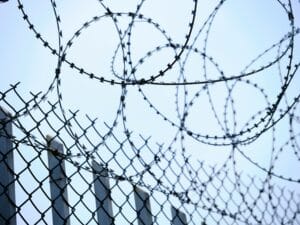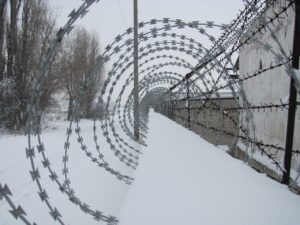
News


How A New York Program is Reframing Prison Education
By Courtney Subramanian About two hours miles north of Manhattan, a group of young men meets weekly to debate philosophy and discuss composition. The curriculum is like any other liberal arts course, but the classroom is quite different from what most people experience. These classes take place behind the confines of the Otisville Correctional Facility, a medium-security
Why Should We Care About What Happens in Prison?
Here at the Prison Law Blog, our goal is to expose issues as they relate to prisoners’ rights, prison law, and violations of civil rights in American prisons. Our goal is to be a hub of information so that criminal defense attorneys, politicians, and the families of prisoners have the opportunity to find out what
A Rare Opportunity for Criminal Justice
By Dianne Frazee-Walker
Leave it to the baby-boomer generation to be a primary contributor of a new paradigm for criminal justice reform. After years of punitive legislation in an effort to cut-back on crime, young law-makers are having an epiphany about what really works when it comes to challenging high crime rates and lowering the recidivism rate.
Two major reasons for these changes are the almighty dollar and the fact that the current legislation is the first generation that hasn’t experienced the impact of Prohibition and totalitarian regimes.
Welcome to an era where for the first time in political history the right and left wingers are merging together with efforts to mend the present condition of the criminal justice system.
The current economic status of the United States is partially responsible for legislature to take a more serious look at how mass incarceration is causing state and federal budgets to continue a growing deficit.
The 2008-2009 recession forced conservatives to consider a more effective approach to incarceration.
Between baby-boomers who are tired of punitive approaches for controlling crime and generation X-er’s (born 1965-1979) fresh philosophies around criminal justice legislation, it is an exciting time to witness the most significant criminal justice overhaul in American history.

The Purpose of Prison and the Measuring Stick of Recidivism
In a perfect world, prison generally has three purposes: prison acts as a deterrent to instant and repeat crimes, prison punishes the wrongdoer, and prison ideally treats or rehabilitates the wrongdoer so they no longer engage in crime. This article will address these three purposes of prisons and show how the instance of recidivism can

The Effects of Private Prison Confinement in Minnesota on Offender Recidivism
The Minnesota Department of Corrections (DOC) recently completed an evaluation of the effects of private prison confinement on offender recidivism. The evaluation assessed the impact of incarceration at the Prairie Correctional Facility (PCF) in Appleton, Minnesota, on recidivism among 3,532 offenders released between 2007 and 2009. The average follow-up period for the offenders in this
Literacy Fact Sheet: Correctional Education
From the Oklahoma Department of Libraries
Inmates have among the lowest academic skills and literacy rates of any segment of society. Upon completing their sentence, most inmates re-enter society no more skilled than when they entered the correctional facility.—Correction Education Data Guidebook, U.S. Department of Education
Need
- The United States has the highest documented incarceration rate in the world. At yearend 2010, the total number of offenders under the supervision of the adult correction authorities represented about 3% of adults in the U.S. resident population, or 1 in every 33 adults. Some 2,266,800 adults were incarcerated in prisons or jails, while another 4,887,900 were under community supervision as part of the parole and probation systems. America locks up more of its citizens than Iceland, Japan, Denmark, Finland, Norway, Sweden, Switzerland, Ireland, Germany and Italy combined.
- In 2008, one of every 48 working-age men was in prison or jail.—The High Budgetary Cost of Incarceration
- In 2008, federal, state, and local governments spend nearly $75 billion on corrections, with the large majority spent on incarceration.—The High Budgetary Cost of Incarceration
- If the male high school graduation rate were increased by just 5%, annual crime-related savings to the nation would be approximately $5 billion dollars. The benefits would vary from state to state: South Dakota (at the low end) would save $1.6 million, Oklahoma (near the middle) would save $63 million, and California (at the high end) would save almost $675 million.—Saving Futures, Saving Dollars
- Nationwide, three-quarters of state prison inmates are drop-outs, as are 59% of federal inmates. In fact, drop-outs are 3.5 times more likely than high school graduates to be incarcerated in their lifetime. African Americans are disproportionately incarcerated. Of all African American male drop-outs in their early 30’s, 52% have been imprisoned. 90% of the 11,000 youth in adult detention facilities have less than a 9th grade education.—Every Nine Seconds in America a Student Becomes a Dropout
- Both male and female prison inmates had lower average scores on all three literacy scales (prose, document, and quantitative) than adults of the same gender living in households. 56% of prisoners had Below Basic or Basic prose literacy skills.—The 2003 National Assessment of Adult Literacy (NAAL)
Texas Study on Postsecondary Correctional Education
In the field of correctional education, there are numerous tools, different types of prison education programming which can be used to teach and treat our incarcerated students. These include basic literacy, high school equivalency (often in the form of GED classes), Adult Continuing Education, Adult Basic Education, vocational training, college in prison, and more. All
Postsecondary Correctional Education: College for Prison Inmates
Studies have consistently shown that those imprisoned tend to have lower levels of formal, academic education. Some have suggested that as many as half of U.S. prisoners are functionally illiterate — implying an inability to read at a 6th-grade reading level. While the effects of providing basic literacy classes to prison inmates have the potential
